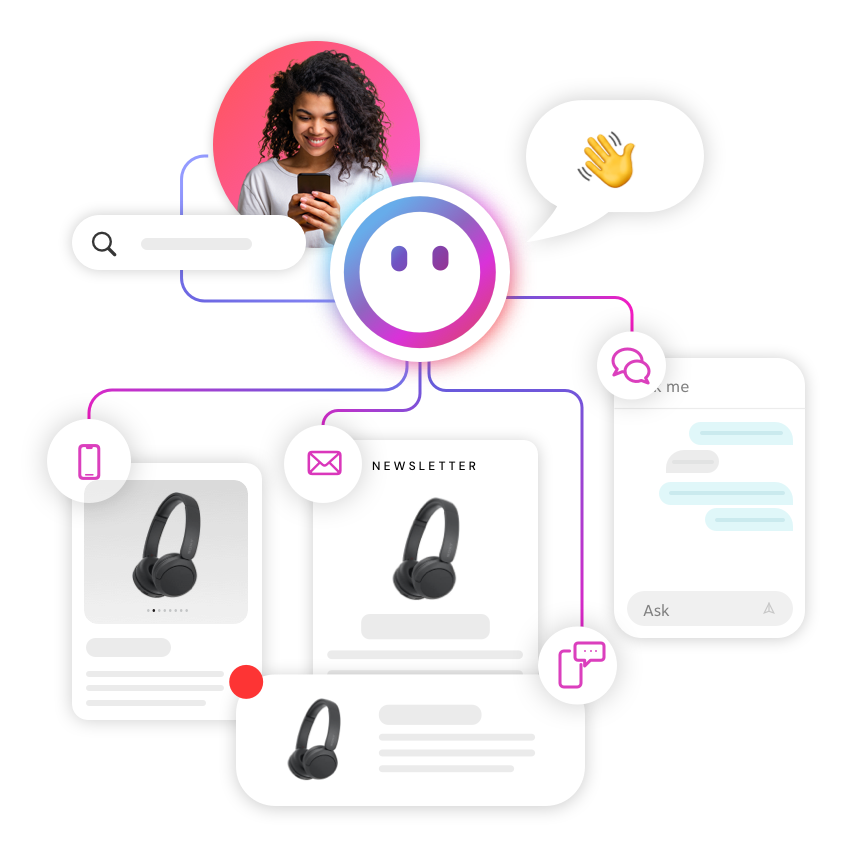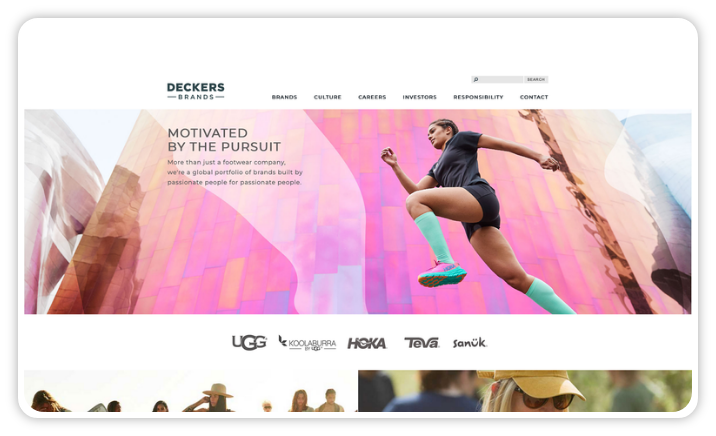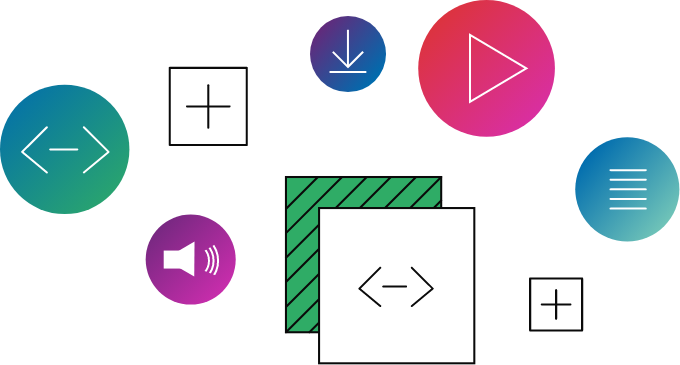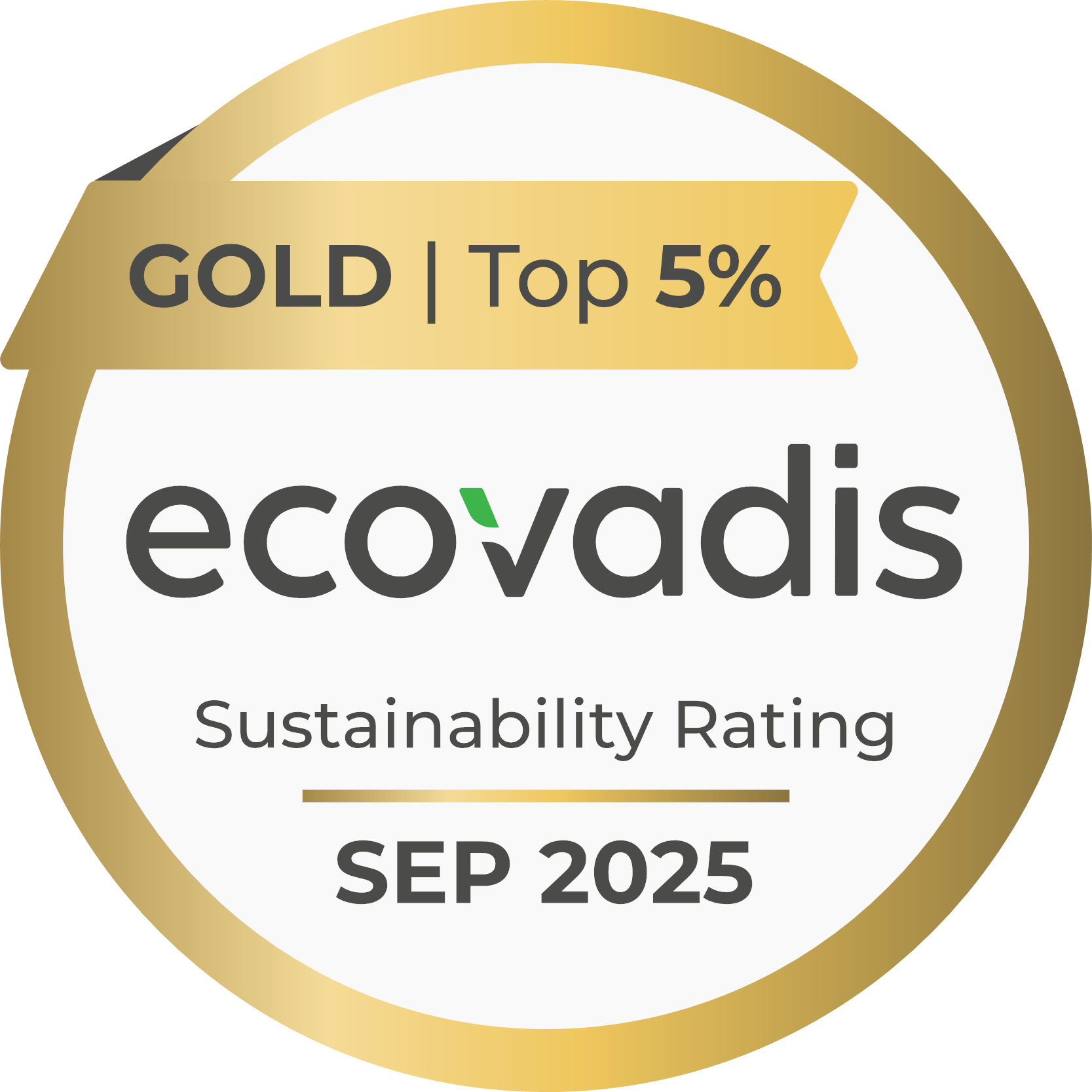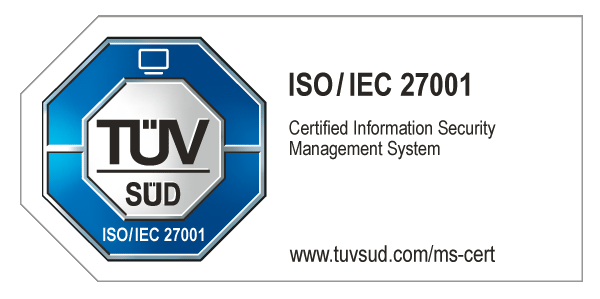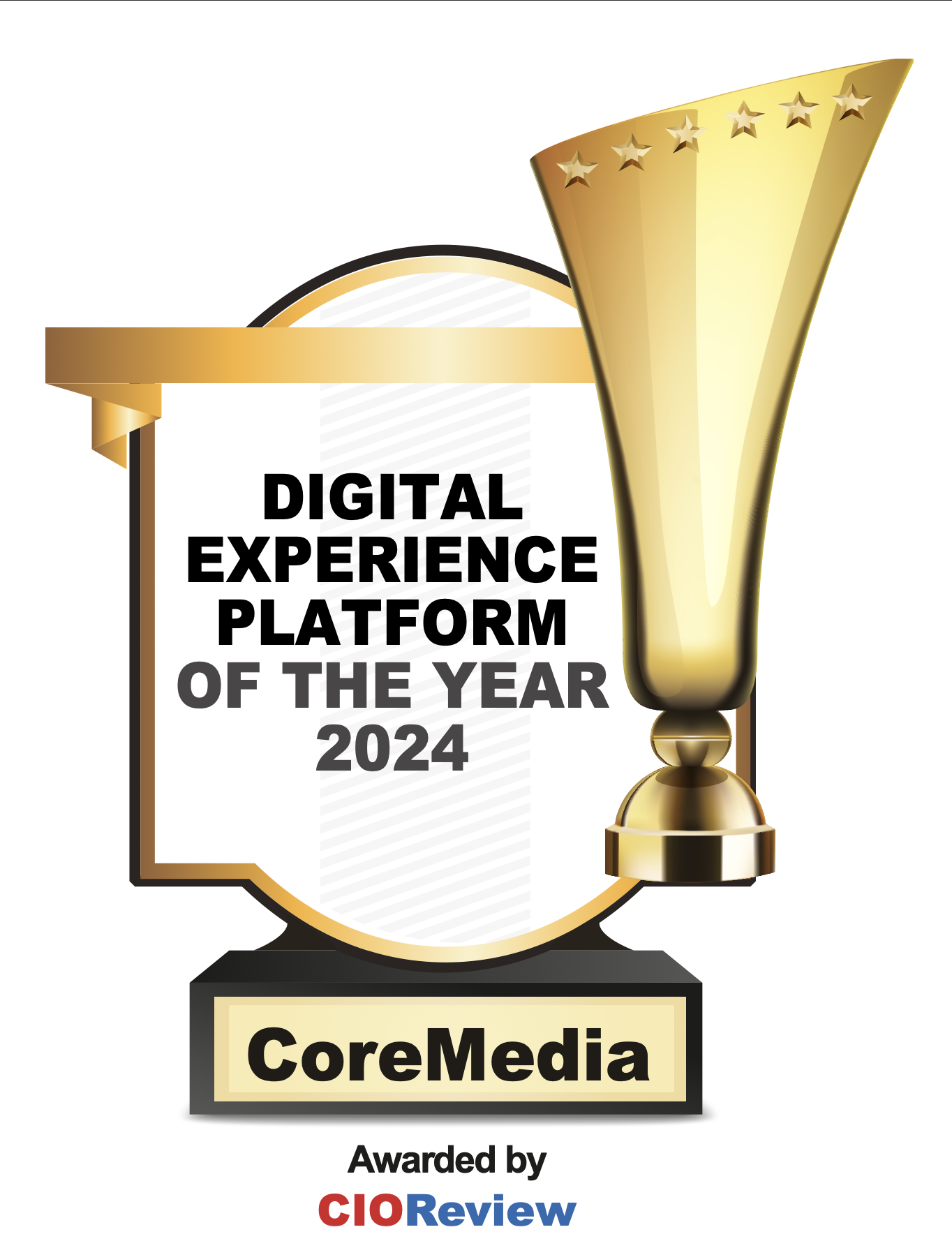People are tired of one-size-fits-all marketing. These days, they expect brands to know them and to understand what they like, need and care about. That’s where personalization comes in. When done right, it helps you create meaningful moments with your audience by delivering content, deals and interactions that actually matter to them.
When done right, personalization can significantly boost engagement, customer loyalty, and conversion rates. Companies leveraging advanced data analytics, AI, and Digital Experience Platforms (DXPs) can provide dynamic, real-time personalization across multiple channels. Whether it’s recommending the perfect product, localizing content based on location, or offering time-sensitive deals, personalization enhances the user journey and drives business growth.
By implementing a well-structured personalization strategy, brands can increase customer satisfaction, reduce churn and improve ROI, ultimately setting themselves apart in a competitive marketplace.
Research and consumer surveys revealed that 71 percent of consumers expect a tailored personalized experience and 76 percent get frustrated if these expectations are not met.
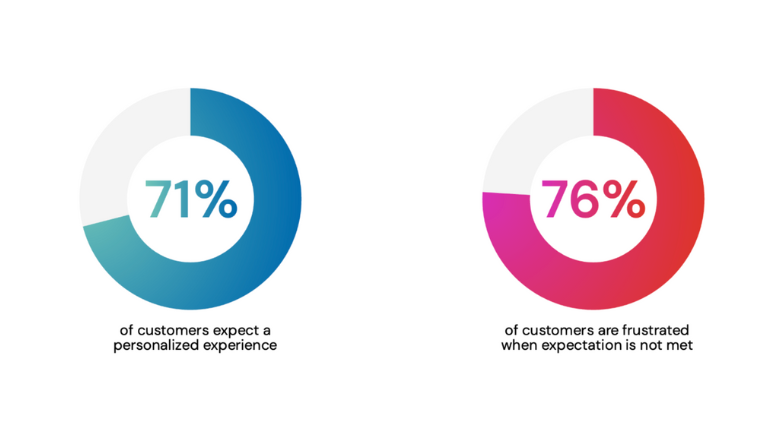
What is location-based personalization?
Location-based personalization is a powerful strategy that tailors digital experiences based on a user’s geographic location. By leveraging real-time data from GPS, IP addresses, Wi-Fi signals or beacons, businesses can deliver hyper-relevant content, offers and recommendations that align with a user’s surroundings and context.
This approach enhances customer engagement by making interactions more timely, local and personalized. For example, a retail brand can send exclusive in-store discounts, event invites or offer additional services when a customer is near a store.
By integrating location intelligence with a Digital Experience Platform (DXP), companies can create seamless, context-aware experiences that improve customer satisfaction and drive conversions, turning every interaction into an opportunity to engage meaningfully and helps build a long-term relationship resulting in more loyal customers.
Content personalization example: Delivering hyper-relevant content based on location
The CoreMedia Experience Platform makes it easy for businesses to deliver relevant content based on customer locations.
As mentioned before, location-based personalization is a great opportunity to provide relevant content and services to your customers based on their location, but you should also consider providing a good set of default content in case customers do not want to share their location due to privacy concerns.
In the following example we will walk you through a step-by-step example demonstrating how relevant content can be delivered based on a visitor’s geolocation.
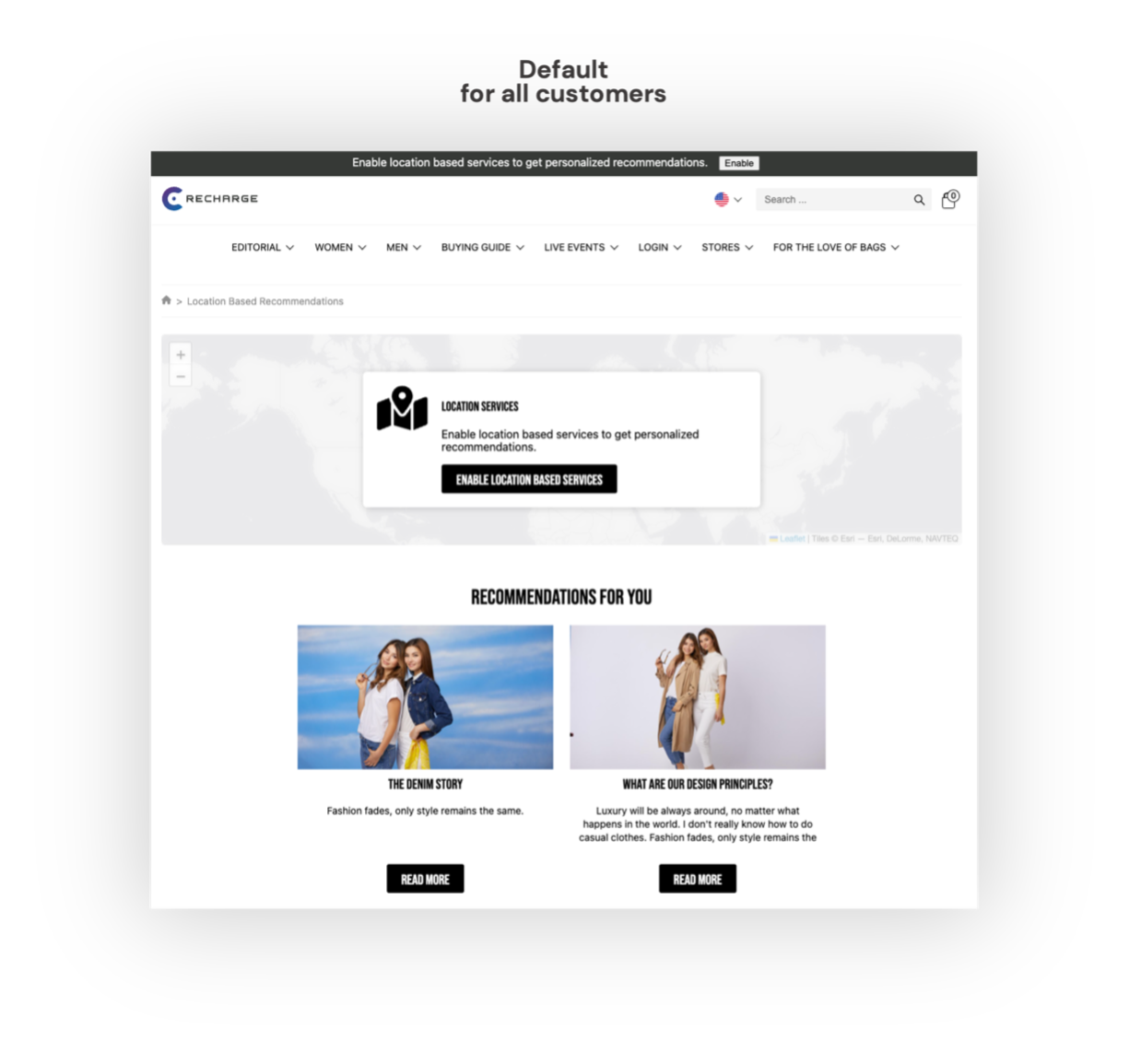
In our example, visitors have the choice to share their location to get more personalized recommendations.
When the customer has chosen to share the current location, relevant content can be delivered by CoreMedia Content Cloud.
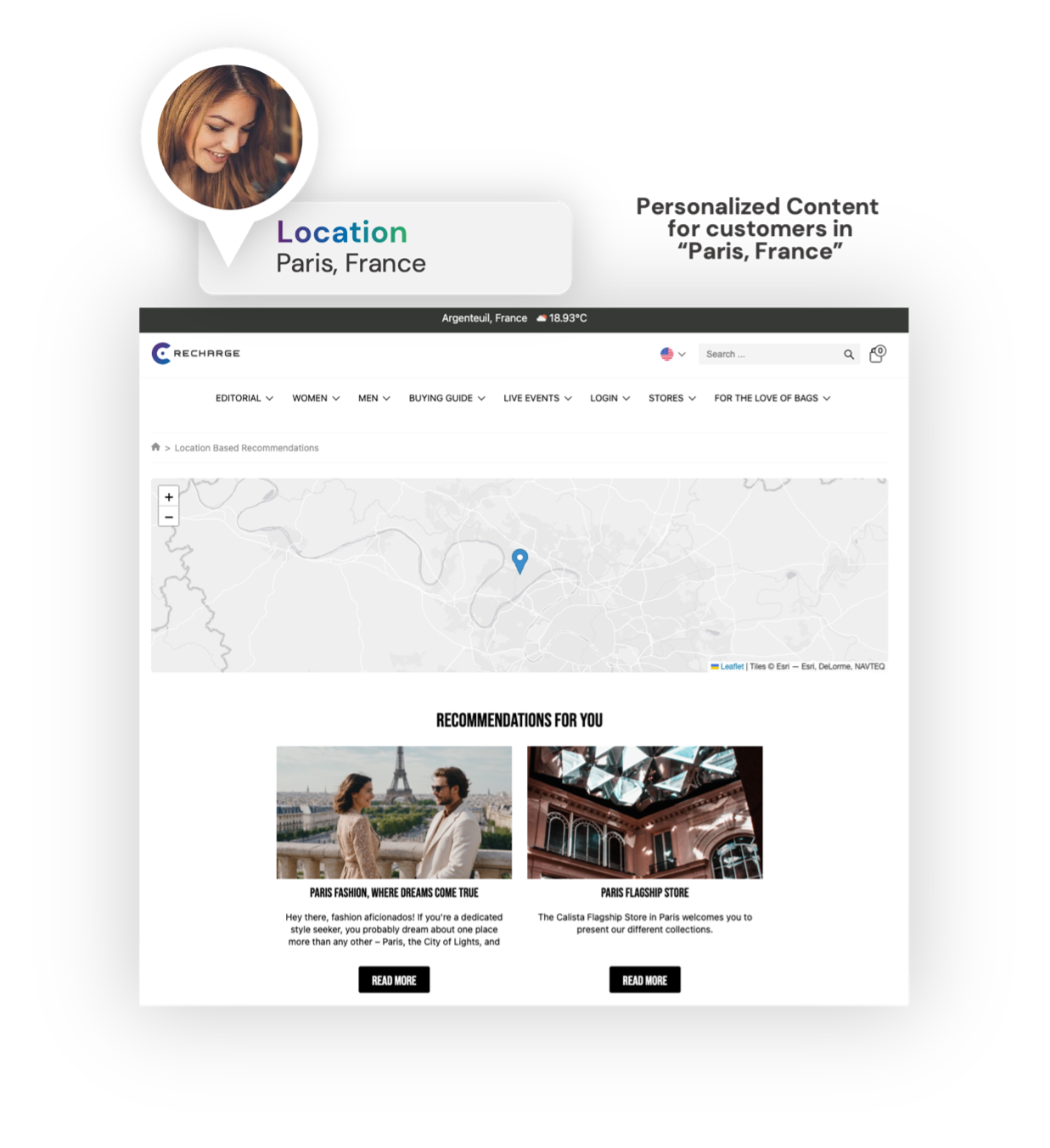
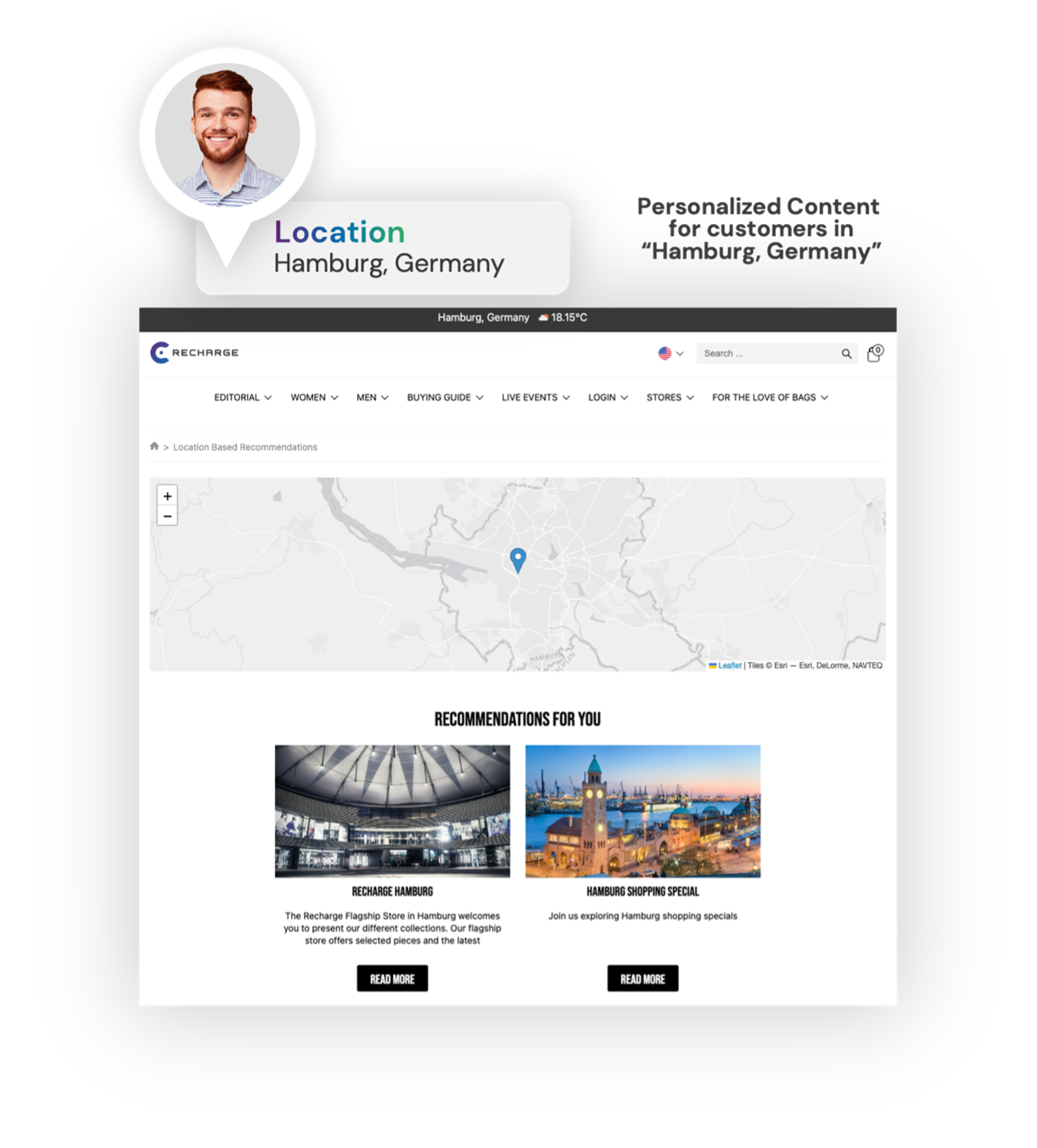
The screenshots above show a default landing page and two personalized variants for a customer located in Paris and another one located in Hamburg.
As you can see, depending on the location, different recommendations are shown such as events or nearest stores.
From an editorial perspective, you would use the CoreMedia Studio to create content, and it’s quite easy to set up location-based content, because all content in CoreMedia can be tagged with a location.
The following screenshots show CoreMedia Studio: On the left-hand side, you see how the article “Paris Fashion, where dreams come true”, that is being edited, is assigned with the tag for the location “Paris”.
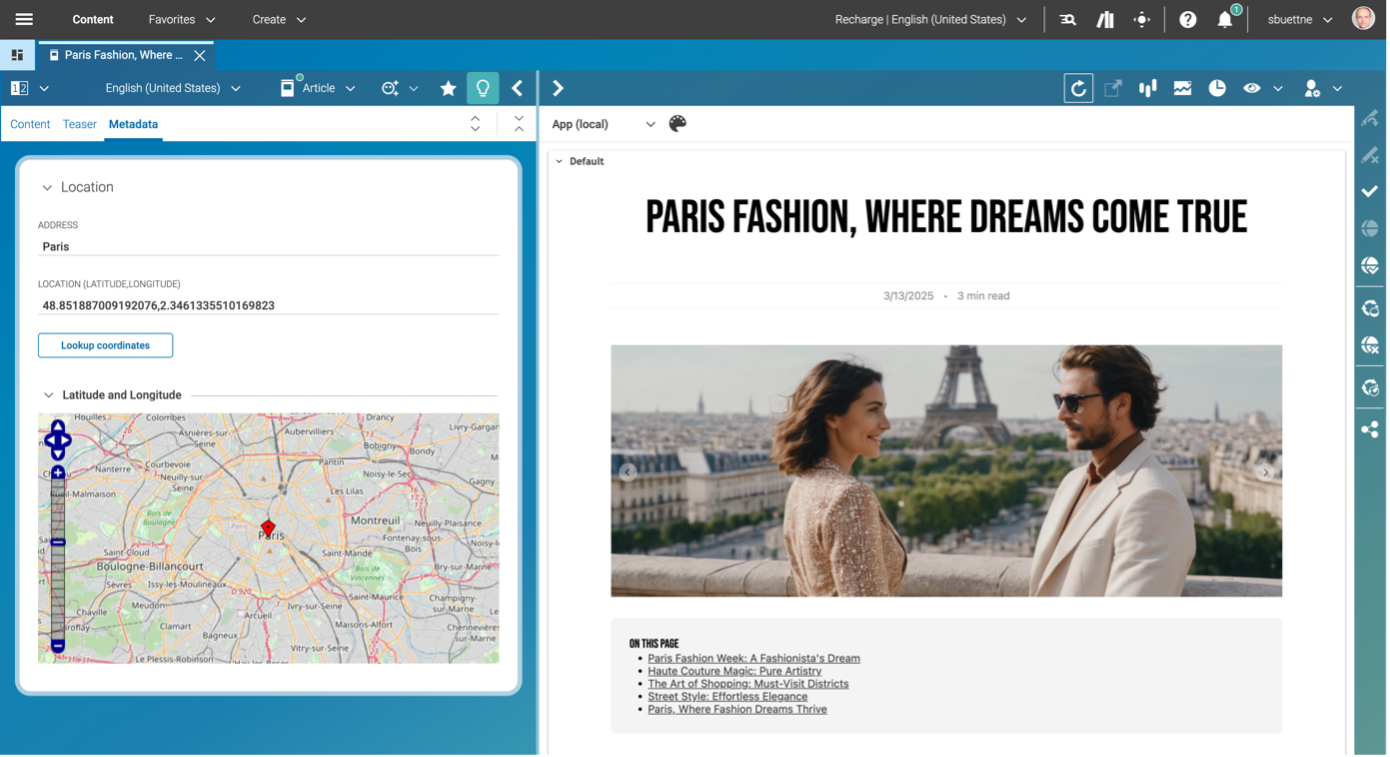
Once a content like the article above has been assigned with a location tag, the CoreMedia Experience Platform leverages a technology called “spatial search” to retrieve relevant content. Spatial search is a technique that retrieves search results based on geographic proximity. It works by indexing location data — such as latitude and longitude — within the CoreMedia search index allowing queries to efficiently find nearby points of interest within a given distance to the given location.
Editors can set up query lists in Studio, filtering the returned search results by the selected content types and can also define a maximum distance for the spatial search. A query list dynamically selects content items (articles, videos, products, pictures, etc.) that fulfill specific conditions. Its items can be seen as a dynamic collection and can be used in all places where articles and the like are used.
These query lists act like placeholders on any page rendering the hits returned by the spatial search in real-time for each individual visitor, thus allowing to personalize the rendered experience.
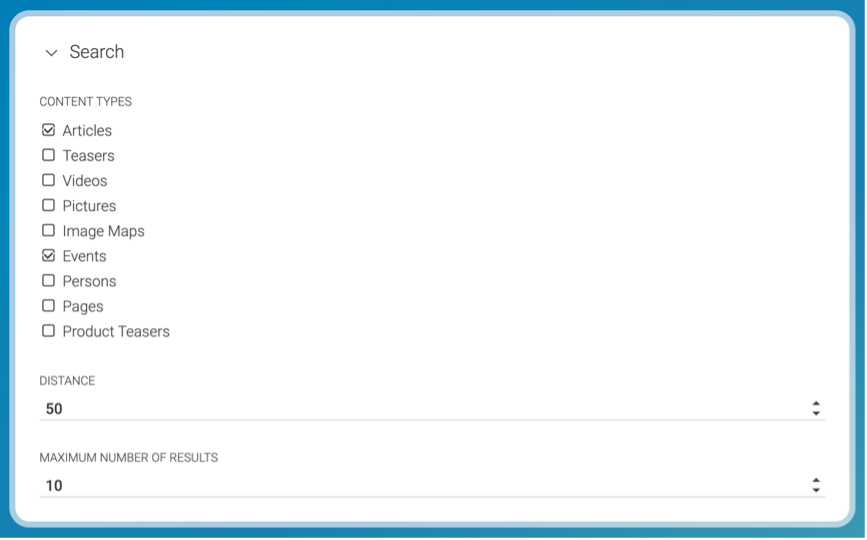
Afterwards, these personalized results are rendered on the desired pages as shown above on the personalized landing pages.
Customer segmentation by country or region
Next to CoreMedia Content Cloud, where the content is created and tagged, our CoreMedia Experience Platform comprises the CoreMedia Engagement Cloud. This is where customer data and interactions are tracked and where this data is being used to drive actions.
For our topic of location-based personalization, Engagement Cloud’s functionality of so-called “visitor profiles” comes into play. The visitor profiles defined in CoreMedia Engagement Cloud empower marketers to create highly targeted audiences by leveraging a combination of tracked data points, all aggregated and assessed in real-time. These profiles are built using rule-based definitions that incorporate attributes such as “new / returning visitor” status, lead score, traffic origin, and other behavioral or demographic insights.
By analyzing these data points, businesses can categorize visitors into meaningful segments, allowing for personalized marketing efforts, optimized user experiences, and more effective conversion strategies. This segmentation capability enables precise audience targeting, ensuring that each visitor receives relevant content and engagement based on their unique journey and characteristics.
Coming back to our use case of location-based personalization: The example below shows a variety of visitor profile definitions with rules on the visitors location. With this, marketeers can easily target visitors from specific countries, regions or other geographical areas.
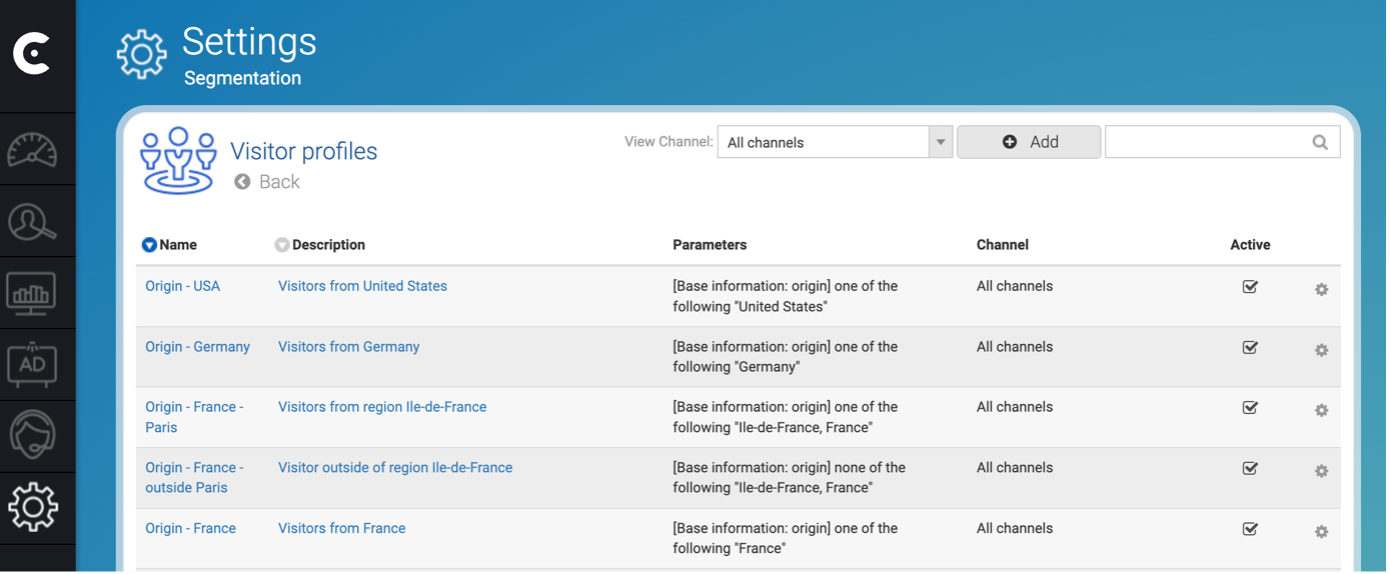
These segmenting rules are dynamically applied to visitors in real-time to personalize their experience throughout the customer journey.
The tight integration of Content Cloud and Engagement Cloud enables marketeers to use the defined segments when creating personalized content experiences. So, if users want to render specific banners depending on the visitors’ location instead of just showing a list of nearby matching results as described above, they can set up segmentation content in Content Cloud Studio, mapping specific content to a defined visitor segment.
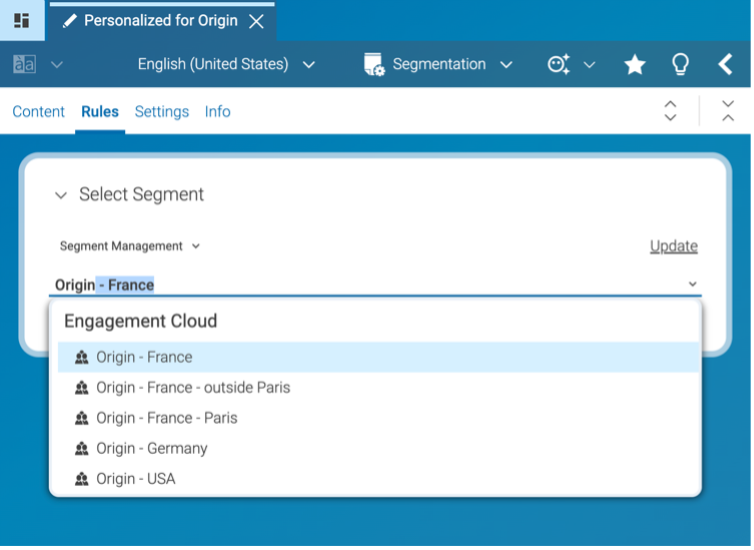
In the example below, the segmentation is configured to target visitors in Paris with a dedicated content for the “Flagship Store in Paris”, whereas all visitors outside of the Paris region will be shown the more generic story about “Trendy Accessories”.
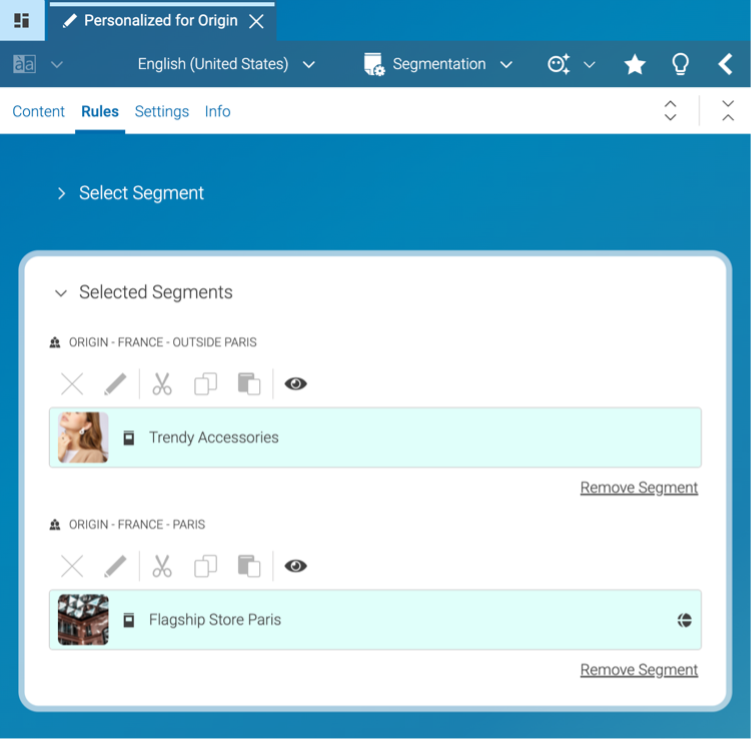
Ready to get started?
As you can see, creating personalized interactions that resonate with each customer, for instance via location-based personalization, is a key aspect of elevating experiences and driving impact.
There are no limits to the types of personalization you can achieve with the CoreMedia Experience Platform. Whether it's based on location, behavior, transactions, or contextual situations, the platform adapts to your needs. This flexibility is illustrated by our CoreMedia CX Maturity Model.
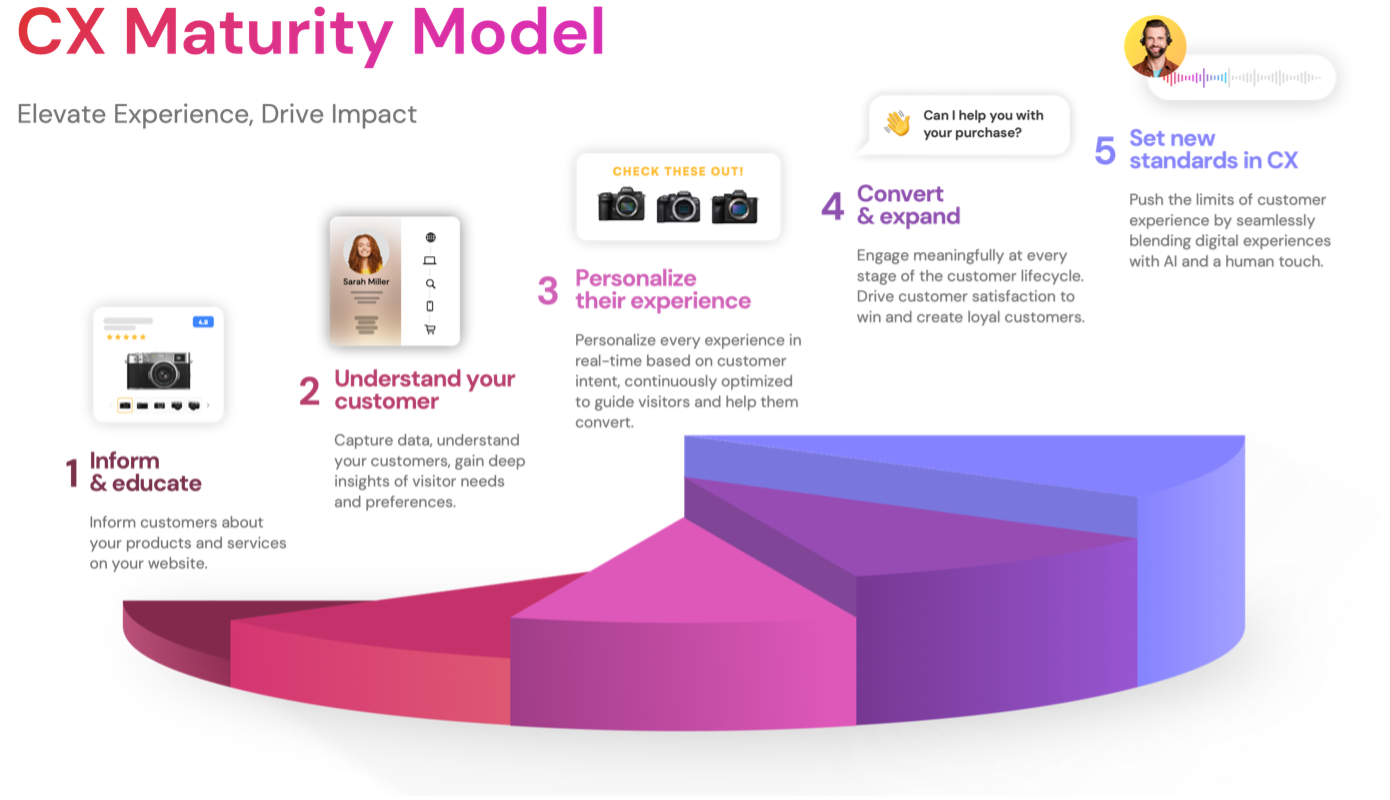
Want to take your customer experience strategy to the next level? Download our whitepaper on the CX Maturity Model to discover how businesses like yours can assess, optimize and scale their customer experience efforts.
Learn the key stages of CX maturity, actionable steps to improve engagement and best practices for driving long-term customer loyalty. Get your free copy today and start building a more customer-centric future!
👋🏻 Thank you for reading!
If you have questions, just reach out to us.
